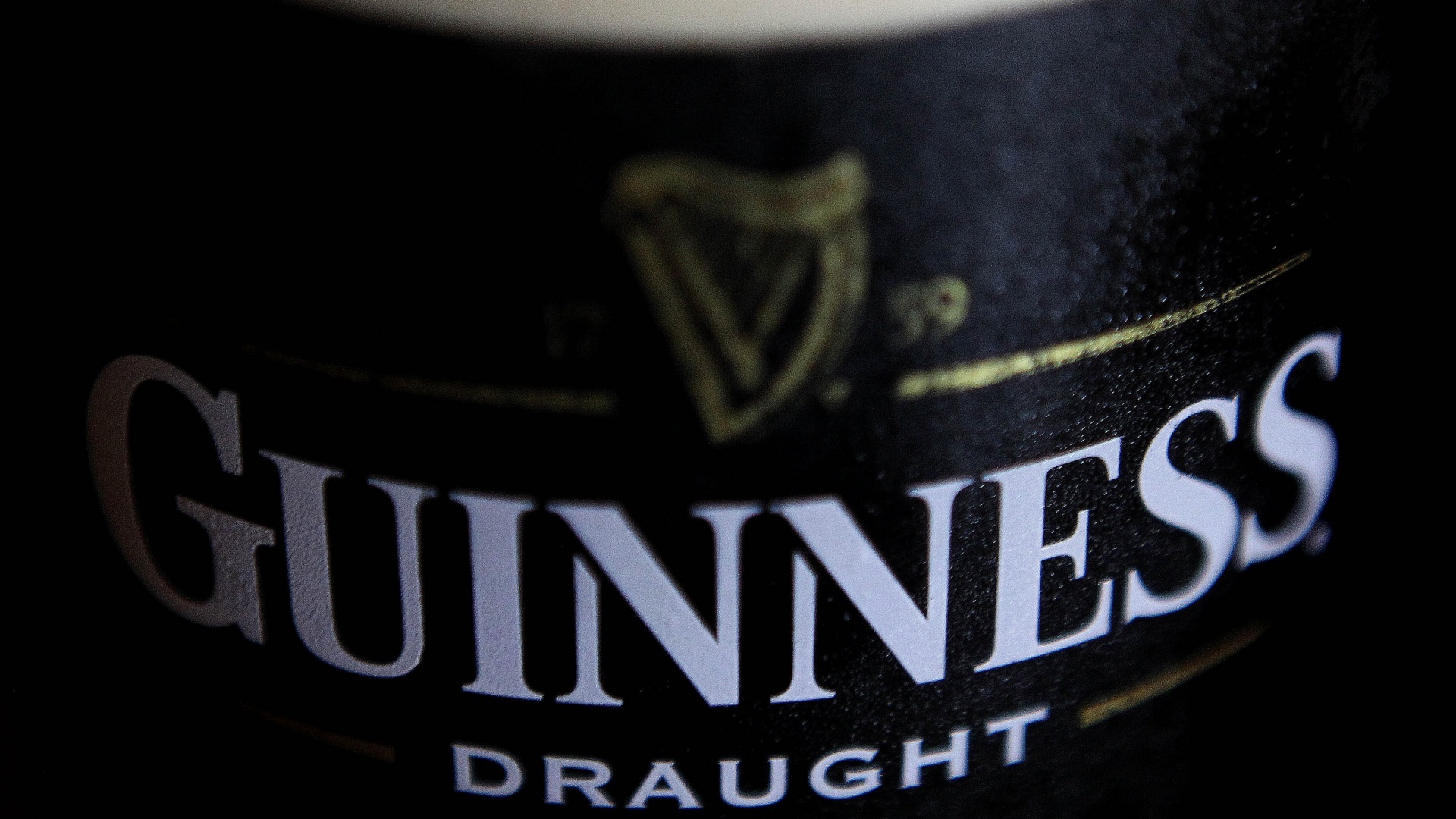
When you think of Ireland, one thing that probably springs to mind straight away is a pint o’ Guinness.
The drink has become a symbol for the country, especially on St Patrick’s Day – where the company can expect to sell around 7.5 million pints worldwide, almost twice what it sells on a normal day.
So here’s 9 things you probably didn’t know about the famous brew and its company.
1. It’s not black
While it’s commonly known as “the black stuff” the colour of Guinness is actually a really deep ruby red. Honest. Go and hold a pint up to a light, you’ll see.
And that colour is a result of the roasted barley.
2. The brewer never intended to sell it
Arthur Guinness, who was from a family of brewers, started off his career in the 1759 by brewing ale, not stout.
But at the time, a dark beer from London – called Porter – was becoming increasingly popular in Dublin.
So Arthur – clearly overcome by some serious *fear of missing out* – decided to focus all his efforts on perfecting his dark beer.
3. There’s a lease on the brewery that won’t be running out any time soon
Arthur was a confident guy. He signed a 9,000 year lease on the St James’ Gate brewery in Dublin in 1759 for a steal at just £45 per year.
The original lease is on display on the first of the seven stories of the Guinness Storehouse exhibition tagged on to the brewery – but be sure to look down or you’ll miss it.
4. The perfect pint takes 119.5 seconds to pour
And the branded Guinness glass isn’t just for decoration – it actually helps with the measurements. Want in on the routine?
To begin with, the glass should be placed at 45 degrees. Then pull the tap steadily and aim the liquid at the harp logo on the side. When the liquid reaches the bottom of the harp, start slowly tilting the glass upright – then when the liquid reaches the top of the harp, stop.
Allow the drink to settle so it’s all the same colour then top it up to the rim and there ya have it, the perfect pint.
5. The creamy head is caused by SCIENCE
That pause in the pouring process is essential because that’s when the head is formed.
Guinness’ chemical formula is low in carbon dioxide but pretty high in nitrogen. Nitrogen bubbles rise to the top of the drink during the pause and come together to form that creamy layer.
6. It’s popular all over the world – especially in Africa
Guinness is drunk in an impressive 150 countries – and 40% of all consumption comes from Africa alone.
Us Brits are its biggest consumers, followed by Ireland, Nigeria, America and Cameroon.
7. The Guinness harp is different to the Republic of Ireland harp
The straight edge always appears to the left on the trademarked Guinness harp – whereas it’s the opposite way round for the government.
8. The company was good to its people
In 1928, employees had access to medical and dental care, education scholarships and a pension – and were believed to have been allowed to sample their product throughout the day. Not bad.
The company also promised every soldier in World War II that they would have a bottle of Guinness waiting for them on Christmas Day.
9. It’s actually quite good for you – and now it’s vegan
The company was told to stop using one of its old advertising slogans- ‘Guinness is good for you’ – years ago. But one study suggested drinking Guinness could actually help prevent heart clots, the benefits of which could not be said for lager.
Some people even reckon it’s good for washing your hair in… but we’ll leave you to check that one out for yourselves.
A common misconception of the drink is that it’s ‘heavy’ and so full of calories. In fact, a pint contains around 200 calories – which is actually less than other lagers, and even less than a pint of orange juice (220 cal)! Although, maybe don’t replace it at the breakfast table just yet.
Throughout its 256-year history, Guinness has used a small amount of isinglass – which comes from the bladders of some fish – as a clarification agent. But, from 2016, the company will now use a new vegan-friendly filtration plant.
Even more reason to grab a pint tonight. Sláinte.

Enjoy the convenience of having The Sunday Post delivered as a digital ePaper straight to your smartphone, tablet or computer.
Subscribe for only £5.49 a month and enjoy all the benefits of the printed paper as a digital replica.
Subscribe








